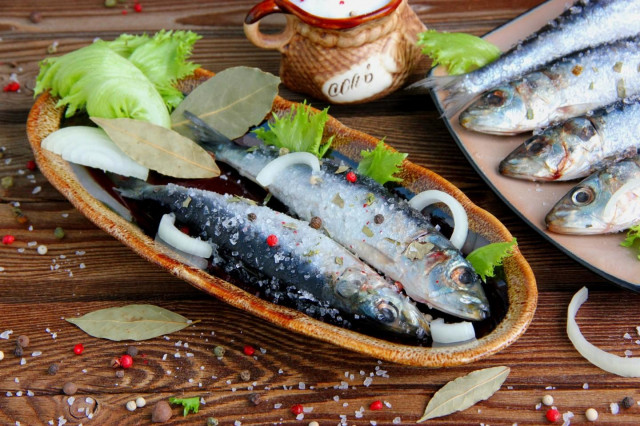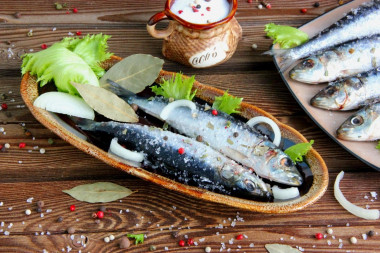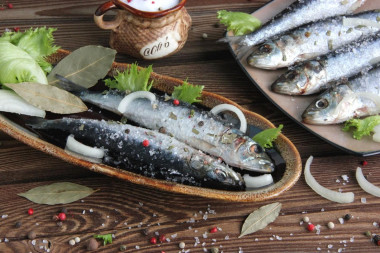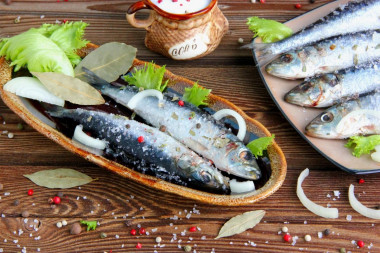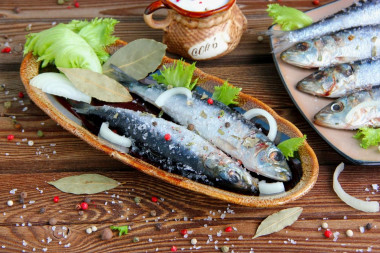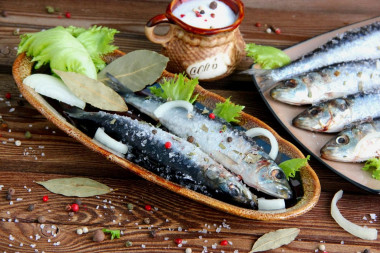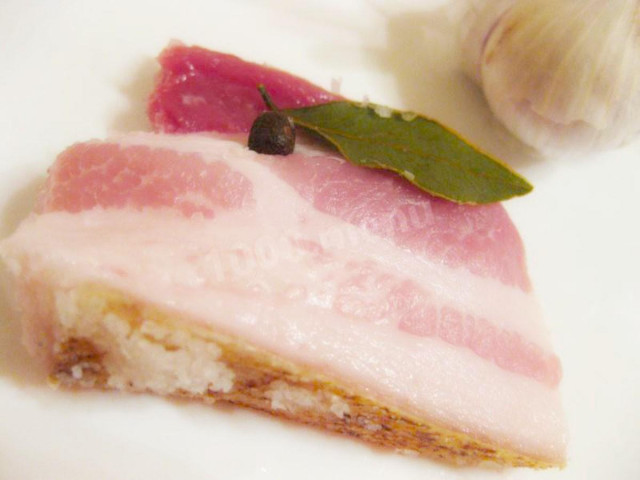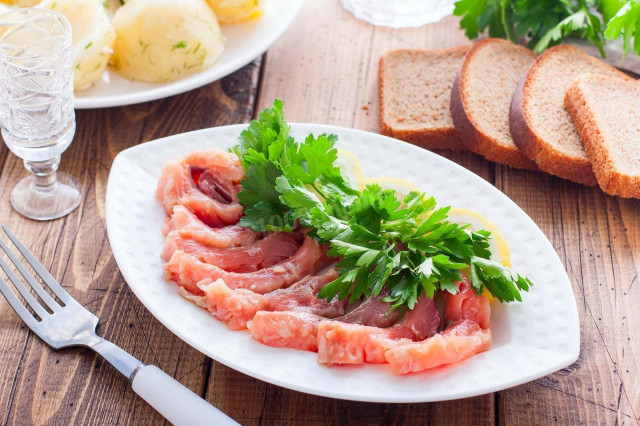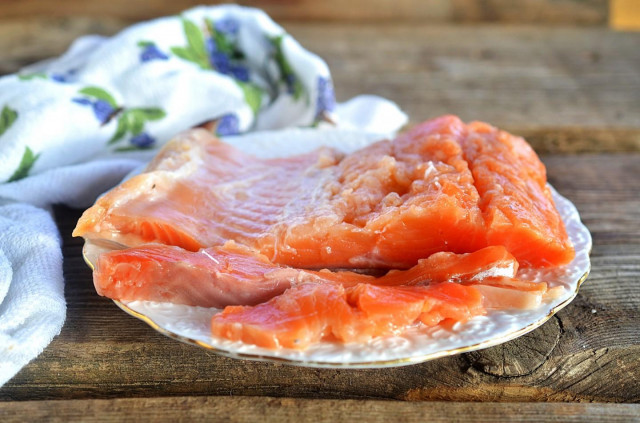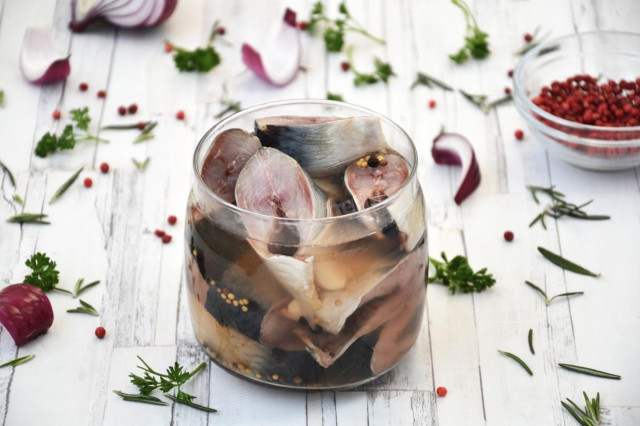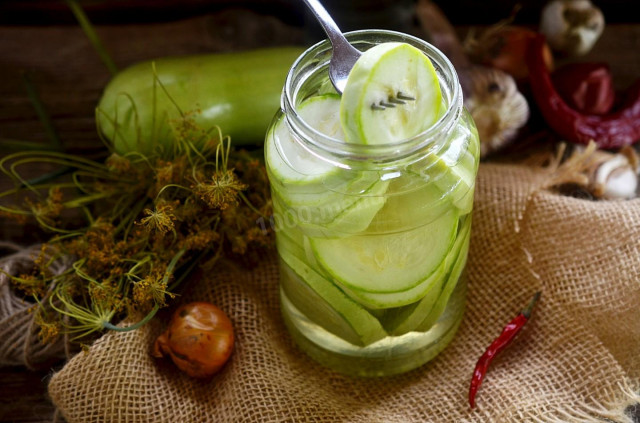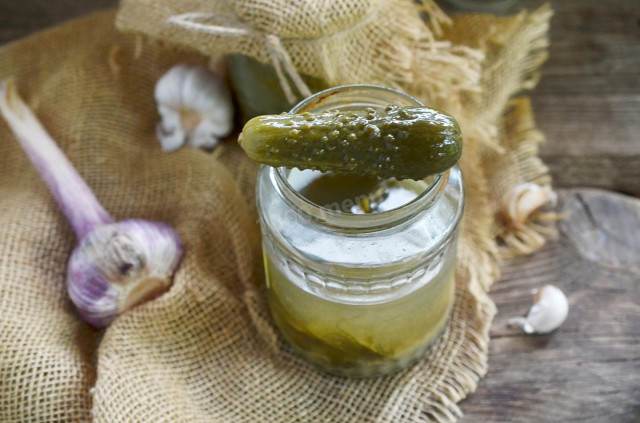Composition / ingredients
Step-by-step cooking
Step 1:
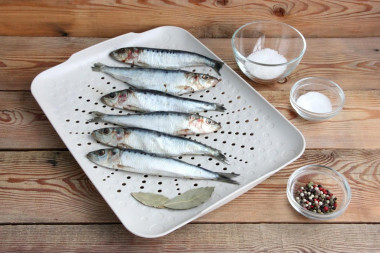
For salting, you can only buy frozen ivasi from us. Let it thaw on the bottom shelf of the refrigerator. The skin of the fish is very thin and delicate, when buying, try to choose fish without damage, but if there are slightly torn places, it's okay. Salt should be taken only large stone salt, extra and iodized will not work. I took only a mixture of peppers and bay leaf, who likes it more spicy, you can add coriander / grains /, cloves, allspice.
Step 2:
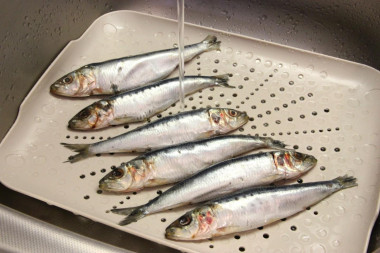
Wash the ivasi thoroughly under cool water. It is not necessary to gut and remove the head or gills, but it is worth washing the gills and mouth well. By the way, this fish does not have teeth, it feeds on plankton, so do not get hurt. If desired, the carcasses can of course be gutted, but this is a small fish weighing 65-100 grams, and it will be perfectly salted and will be very tasty.
Step 3:
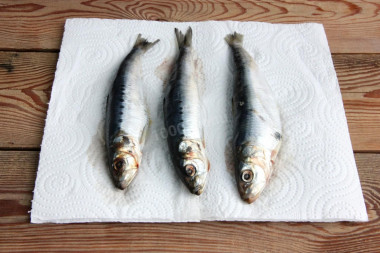
Dry the washed fish with paper towels.
Step 4:
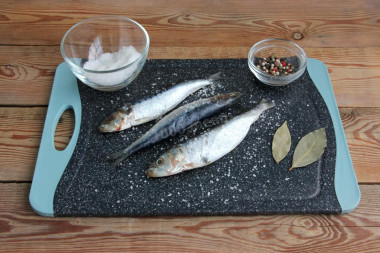
Prepare the salting mixture. In a bowl, mix salt, sugar, crushed pepper, finely broken bay leaf. Sprinkle each fish and lightly rub with such a mixture, be sure to pour a little into the gills. Spices can be taken according to your taste and preference, or you can just do with salt and sugar.
Step 5:
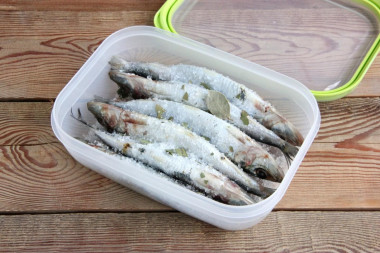
Sprinkle a little salt mixture on the bottom of a food-grade plastic container or in a glass container, put the fish belly up in one row, sprinkle the remains of the mixture on top. Close the lid and leave at room temperature for 10 hours, then put in the refrigerator for another 1 day.
Step 6:
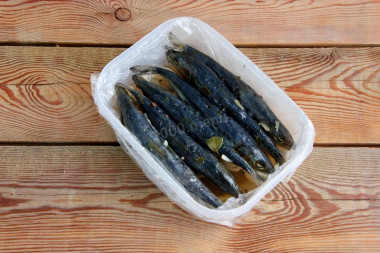
At the bottom, brine will appear after 10 hours, gently turn the fish upside down once, for even salting.
Step 7:
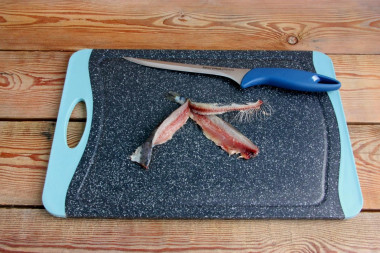
After two days, we cut up the fish as usual and remove the sample! It will be lightly salted. We usually eat with potatoes, for other purposes it is too small. If they salted more and didn't eat it right away, I cut it up, clean it from the skin and bones, put it in a jar layer by layer with onion rings and pour refined oil. Store in the refrigerator.
The Far Eastern sardine or ivasi is a marine fish of the genus sardinopsis (Sardinops).
The trade name "ivasi herring" was given to this fish due to its external similarity to herring, and to taste too.
Sardine ivasi is the most important commercial fish. In Soviet times, it was very popular due to its accessibility, usefulness and excellent taste, it was sold in the form of canned food and preserves.
The revival of the ivasi fishery by Russian fishermen began in 2016.
In my region, it began to be sold quite recently, but it is still available in canned form and very rarely brought frozen.
I remember its taste well, under boiled potatoes, with pickled onion, poured with butter.. When I saw it on sale, of course I couldn't pass it by.
Fish is very easy to cook at home, there are a lot of recipes, but this one seems to me the simplest. Although, it is probably not very important to add salt in brine or use a dry ambassador, the fish will always be delicious.
If you salt in brine, you can take the classics again. For 1 kg of fish, you need 1 liter of water, 3 tbsp.l of salt, 1 tbsp.l. sugar. Spoons with a small slide. Pour the unpeeled fish with the cooled brine and put it in the refrigerator for 2 days.
Caloric content of the products possible in the composition of the dish
- Herring in vegetable oil - 301 kcal/100g
- Herring in sour cream - 97 kcal/100g
- Herring in tomato sauce - 159 kcal/100g
- Hot smoked herring - 215 kcal/100g
- Pickled herring - 192 kcal/100g
- Fresh herring - 161 kcal/100g
- Salted herring - 217 kcal/100g
- Bay leaf - 313 kcal/100g
- Granulated sugar - 398 kcal/100g
- Sugar - 398 kcal/100g
- Salt - 0 kcal/100g
- A mixture of peppers with peas - 231 kcal/100g

